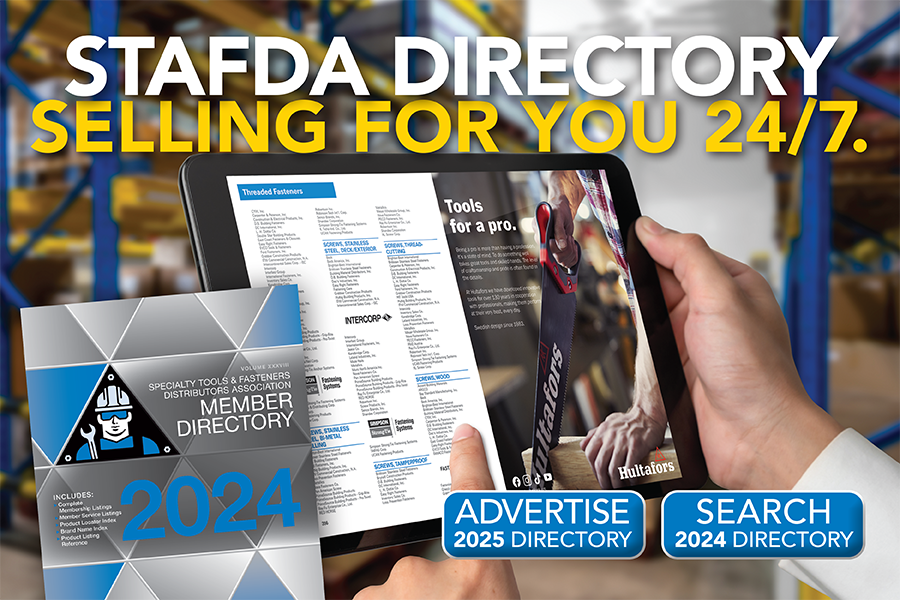Exclusive: How Distributors Can Budget for an Incentive Program
A well-structured incentive program can consistently contribute to company goals.
 By Jeff Cagle
By Jeff Cagle
A well-structured incentive program is not just a tool that distributors can use to motivate salespeople. It's a strategic asset that can consistently contribute to company goals. However, its effectiveness is significantly influenced by how it's budgeted.
A meticulous approach to budgeting turns your incentive program into a powerful revenue driver. In this article, you’ll learn some best practices for budgeting an incentive program, ensuring it aligns perfectly with your goals and delivers maximum return on investment (ROI).
Set Clear Goals for Your Incentive Program
You need to know exactly what you want to get out of your incentive program to understand how to budget for it. Your primary objectives should drive the budgeting process, ensuring every dollar spent contributes to achieving these goals. Whether it's boosting short-term sales, enhancing long-term employee engagement, or solidifying customer loyalty, goal clarity dictates the scale and type of investment required.
According to a study published in the Journal of Public Administration Research,
“The absence of goal ambiguity and the presence of goal clarity have been found to relate to multiple positive outcomes, including performance.”
Ensure that your incentive program is not just a standalone initiative but is intricately linked to your business objectives. This alignment guarantees that the program not only drives individual performance but also contributes to the company's overall growth.
Understand Your Audience
Budgeting for an incentive program also involves a deep understanding of the target audience. This step is vital because the appeal of the incentives offered should match the preferences and expectations of the participants. An audience analysis helps you identify the best rewards to use in your incentive program. Options include merchandise, travel incentives, gift/debit card, or monetary rewards based on what motivates your participants.
Identify the Type of Incentive Program
Different types of incentive programs warrant different budgeting approaches. Each type of reward comes with its own cost structure and potential ROI, making it essential to match the program type with your budgeting strategy. Here are some examples of the costs involved with different types of incentive programs:
Reward Points Programs
- The cost of reward points (including the potential liability of points not spent, if no points expiration is set), which you can choose to spend consistently or on a variable basis every month
- The cost of an online platform (with a rewards catalog) to deliver the rewards, which usually includes a set-up fee along with a monthly cost
- The monetary and time cost of providing support to program participants as needed
Gift/Debit Card Reward Programs
- Procurement of cards, which will vary according to the amount you want to load the card with
- Shipping and handling costs of sending cards (bypassed if you use virtual debit cards)
- Replacement costs if cards are lost or stolen
Group Travel Incentives
- The one-time cost of booking location accommodations
- The one-time cost of managing the trip
- The recurring cost of marketing the trip and sustaining participating in promotions or contests that determine trip qualification
Of the above incentive program types, group travel incentives have the highest ROI but, because of the initial cost, should be reserved for your top performers. Because participants tend to use gift/debit card rewards quickly, they work well when you need quick turnaround for your ROI. Reward points programs are most effective when you want to retain, educate, and motivate salespeople over a long term.
Explore Channel Incentive Program Buy-In
Collaboration can be a powerful tool in budgeting for an incentive program. Partnering with vendors or other businesses in a channel incentive program can not only spread the financial burden but also enhance the program's scope and appeal. This co-sponsorship approach, often resulting in a win-win situation, can lead to cost savings and increased program participation.
Leverage Analytics for Budget Optimization
Utilizing data analytics is a non-negotiable aspect of modern incentive program budgeting. By analyzing program performance, you can identify the most effective incentives and allocate resources more efficiently. A continuous improvement cycle, driven by data, ensures that the incentive program remains dynamic, relevant, and financially viable.
Plan for Long-Term Sustainability
While immediate costs are a crucial aspect of budgeting, considering the long-term sustainability of the incentive program is equally important. This involves evaluating the ongoing costs of maintaining and scaling the program, such as administrative expenses, technology updates, and expanding the reward portfolio.
In conclusion, budgeting for an incentive program in the distribution sector requires a strategic, data-driven approach. By setting clear goals, understanding the audience, choosing the right program type, selecting an appropriate billing model, leveraging partnerships, utilizing analytics, considering long-term sustainability, and aligning incentives with corporate objectives, distributors can ensure that their incentive programs are not only cost-effective but also powerful tools for driving business success. CS
 Jeff Cagle is an incentive program expert at Extu. Extu is a channel technology company dedicated to helping companies achieve exponential growth. Through smart technology and savvy service, Extu delivers channel technology that boosts sales and maximizes marketing spend.
Jeff Cagle is an incentive program expert at Extu. Extu is a channel technology company dedicated to helping companies achieve exponential growth. Through smart technology and savvy service, Extu delivers channel technology that boosts sales and maximizes marketing spend.














